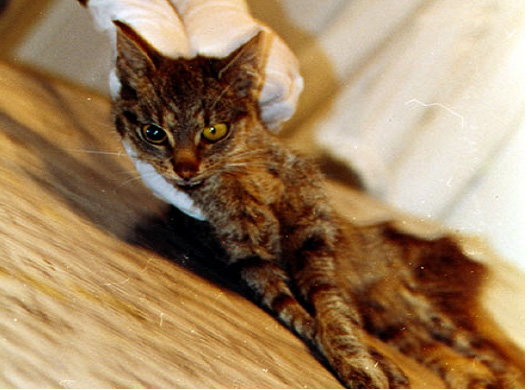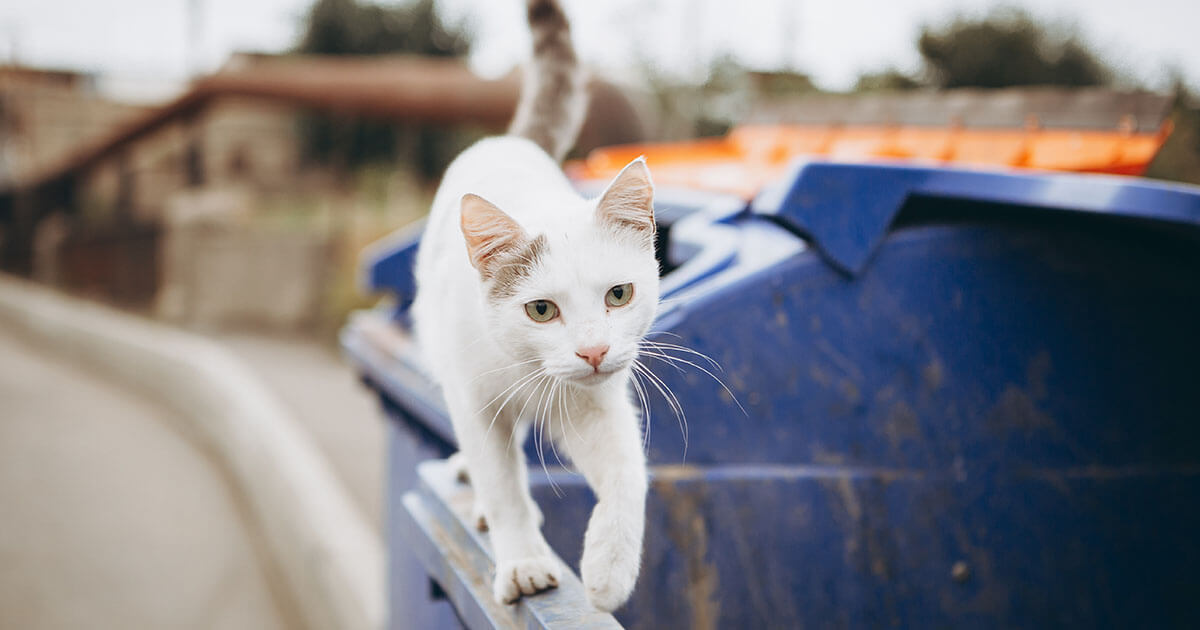A stray cat may carry rabies, but it is not certain without specific testing. It’s essential to approach stray cats with caution and seek professional advice if bitten or scratched.
Stray cats, often seen roaming neighborhoods and alleys, spark a mix of concern and curiosity in our communities. While they can be charming, potential risks such as rabies are a valid worry for many. Rabies, a viral disease that affects the nervous system of mammals, presents a serious public health concern.
Despite the rarity of rabies in domestic animals in many places, due to widespread vaccination, stray cats can sometimes be carriers, especially if they have not had any medical attention or vaccinations. Understanding the behavior of stray cats and recognizing the signs of rabies, such as aggression or unusual tameness, can help in avoiding potential exposure. Remember, safety measures like vaccination for pets and avoiding contact with wildlife are key in preventing the spread of rabies.
Spotting Rabies In Stray Cats
Stray cats can sometimes carry diseases, with rabies being a serious one. Rabies affects a cat’s brain and spinal cord. Quick identification of rabies in stray cats is crucial. Knowing the signs can protect both cats and humans.
Initial Symptoms To Watch Out For
Spotting early symptoms of rabies is key. These symptoms can be subtle, but they are the first hint that a cat may be sick.
- Hiding or shyness: A cat that once was friendly may start avoiding people.
- Excessive licking: The bite area where the virus entered may be licked often.
- Low energy: The cat may seem tired or weak all the time.
- Loss of appetite: A sudden lack of interest in food is a warning sign.
- Vocal changes: The cat’s meow may sound different, or it might not meow at all.
Behavioral Changes Indicating Rabies
Behavior changes are major red flags. A stray cat acting unusual could be dangerous.
Watch for these behaviors:
- Aggression: Even the calmest cat may suddenly attack without reason.
- Confusion: The cat might seem lost, puzzled, or dazed.
- Paralysis: A serious sign where the cat’s limbs may not work right.
- Seizures: Spasms or fits can occur with advanced rabies.
- Foaming mouth: Saliva production increases, causing drooling or foaming.
Keep away from any cat showing these signs, and call animal control right away. Do not try to trap or touch a stray cat with rabies symptoms.

Credit: www.wikihow.com
Understanding Rabies Transmission
When a stray cat wanders into your yard, it can be both an endearing and concerning event. Rabies transmission is a risk that requires understanding for the safety of both humans and pets.
How Rabies Spreads From Cats To Humans
Rabies is a virus that attacks the nervous system. Cats can pass rabies to humans through saliva. This usually happens from a bite. Scratches or open wounds that come in contact with infected saliva can also be dangerous.
- Saliva from an infected cat enters the body
- Virus travels to the brain through nerves
- Symptoms develop after the virus reaches the brain
Rabies can be fatal if not treated quickly. Immediate medical attention is essential.
Risks Of Interacting With Unknown Strays
While not all stray cats carry rabies, it’s important to be cautious. Unknown strays may not have vaccinations. This makes them more likely to carry and spread diseases.
Avoid direct contact with stray cats. This helps prevent potential transmission. Here’s what else to keep in mind:
| Contact Type | Risk Level |
|---|---|
| Touching a stray cat | Low risk |
| Being bitten or scratched | High risk |
| Feeding a stray cat | Moderate risk |
Wash hands thoroughly after any indirect contact. Call animal control for strays that seem sick.
Approaching Stray Cats Safely
Stray cats are common sights in many neighborhoods. While they might seem harmless, one potential concern is rabies. Learning to approach these animals cautiously is critical for your safety and the well-being of the cat. Here’s how you can do that safely.
Precautions To Minimize Risk
Before you interact with a stray cat, it’s crucial to take specific precautions.
- Observe the cat from a distance first. Look for signs of aggression or illness.
- Don’t make sudden movements to avoid scaring the cat.
- Offer food in an open space to assess the cat’s behavior.
- Wear gloves if you decide to touch the cat to avoid direct contact.
- Wash your hands thoroughly after the interaction.
Stray cats might carry diseases, so staying safe is key.
When To Seek Professional Help
If you notice any of these signs, contact animal control or a local animal shelter:
| Signs of Rabies/Injury | Action to Take |
|---|---|
| Foaming at the mouth | Call professional help immediately. |
| Aggression without provocation | Maintain a safe distance and notify authorities. |
| Visible wounds or limping | Do not touch; seek professional assistance. |
Professional help ensures both your safety and the cat’s welfare.

Credit: www.medicalnewstoday.com
Rabies Prevention And Vaccination
The thought of a stray cat potentially having rabies can stir concern among pet owners and communities. Understanding rabies prevention and vaccination is critical. Comprehensive strategies can prevent the spread of this dangerous virus. With the proper approach, pet safety and public health significantly improve.
Benefits Of Vaccinating Pet Cats
Vaccinations play a vital role in protecting cats from rabies. They offer layers of defense:
- Boosts Immunity: Vaccines help cats’ bodies to fight off the virus.
- Increases Safety: A vaccinated cat is far less likely to spread rabies.
- Legal Compliance: Many areas require rabies vaccination by law.
Choosing to vaccinate pet cats brings peace of mind to families. It reduces the risk of rabies transmission to humans and animals alike.
Community Efforts To Control Rabies
Community involvement is crucial in controlling rabies. Collective efforts include:
- Feral cat spay and neuter programs to reduce populations.
- Rabies vaccine clinics to increase accessibility.
- Education on rabies risks and prevention strategies.
Through these actions, communities create safer environments for people and pets. Combating rabies is a shared responsibility.
What To Do If You’re Bitten
Discovering you’ve been bitten by a cat, especially a stray, might set alarm bells ringing about rabies. It’s crucial to take swift and correct action following such incidences. Understanding the right way to respond is not only comforting but can be a lifesaver. Below are structured steps and treatments to follow if a stray cat bites you.
Immediate Steps After A Cat Bite
Act quickly to minimize the risk of infection or disease:
- Wash the wound: Use soap and warm water to clean the area for at least 5 minutes.
- Apply antiseptic: After washing, dab antiseptic on the bite to reduce bacteria.
- Cover the wound: Place a sterile bandage on the bite to prevent contamination.
- Seek medical help: Even minor bites need a doctor’s examination to ensure safety.
Medical Treatments And Rabies Post-exposure Prophylaxis
After immediate care, get professional medical treatment. Here’s what to expect:
| Stage | Action |
|---|---|
| Doctor’s assessment | The doctor will examine the wound, assess risk, and discuss your medical history. |
| Tetanus booster | If your last tetanus shot was over 10 years ago, you might need a booster. |
| Antibiotics prescription | These may be provided to fight potential infection from the bite. |
| Rabies Post-exposure Prophylaxis (PEP): If the cat is suspected of having rabies or unvaccinated, you’ll receive a series of rabies shots to prevent the virus from taking hold. |
|

Credit: wagwalking.com
Frequently Asked Questions Of Does Stray Cat Have Rabies
How Likely Is It That A Stray Cat Has Rabies?
The likelihood of a stray cat having rabies is low, but not insignificant. Always exercise caution and consult local health authorities if bitten.
Can You Get Rabies From A Cat Bite?
Yes, you can contract rabies from a cat bite if the cat has the rabies virus. Prompt medical attention is essential after a bite.
What Happens If A Stray Cat Bites You?
Seek immediate medical attention after a stray cat bite due to infection risks. Clean the wound with water and soap, and contact a healthcare provider for possible rabies or tetanus exposure assessment. Keep an eye on the bite for signs of infection.
Will I Get Rabies If I Get Scratched By A Stray Cat?
Being scratched by a stray cat doesn’t always lead to rabies. The risk exists if the animal is infected. Seek medical advice promptly to assess your risk and consider post-exposure prophylaxis.
Conclusion
Recognizing the signs of rabies in stray cats is crucial for both human and animal safety. Vigilance and prompt action can prevent the spread of this fatal disease. Remember to consult a vet if you suspect exposure and always vaccinate pets to protect your furry friends.
Responsible awareness saves lives. Stay informed and stay safe.

